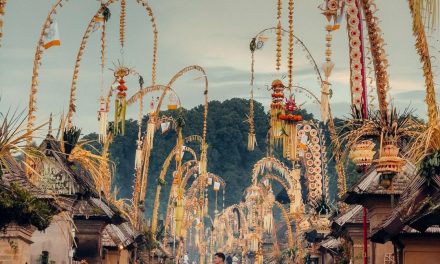Visiting temples in Canggu can be an enchanting experience, with their architectural beauty and serene surroundings inviting us to step into a world that’s rich in cultural significance. However, it’s equally important to approach these sacred sites with respect and understanding of local customs and etiquette. After spending several months in Bali, I’ve gathered insights and personal anecdotes that can help you navigate your visit to the temples in Canggu while honoring the local culture.
Understanding the Importance of Temples in Balinese Culture
Before you even step foot into a temple, it’s essential to recognize their significance in Balinese life. Temples in Bali are not just beautiful spots for tourists to admire; they are active places of worship where rituals and ceremonies occur daily. The Balinese people have a deep spiritual connection to their temples, and acknowledging this sense of reverence can transform your visit.
During my first visit to a local temple in Canggu, I was struck by the intricate carvings and the fragrant offerings placed at the entrance. While snapping pictures felt tempting, I took a moment to appreciate the purpose of the space. Standing there, I noticed a group of locals preparing for a ceremony, adorned in traditional attire, which reminded me of the lively festivals I loved seeing in movies, but this was real life.
Dress Code: What to Wear
One of the first things you’ll notice at Bali’s temples is the dress code. Modesty is key. Both men and women should wear clothing that covers the shoulders and knees. Sarongs and sashes are often available to rent or borrow at temple entrances, and I would highly recommend wearing them. Not only do they add to the respectfulness of your visit, but they also help you blend in with the local culture.
I distinctly remember the first time I forgot to wear a sarong. Arriving at Tanah Lot Temple, I felt a bit underdressed in my shorts and tank top. The kind temple attendant handed me a sarong with a smile and said, “Welcome, but this must come first!” The experience underscored how crucial it is to respect these local customs.
Silence is Golden: Maintaining Quietness
When visiting temples, keeping noise to a minimum is a sign of respect. This doesn’t just pertain to loud conversations or laughter; it also involves turning off your phone or putting it in silent mode. During my visits, I found that the soft murmurs of prayers and the gentle rustle of offerings made the atmosphere peaceful.
One afternoon, while exploring the Goa Lawah Temple, I inadvertently raised my voice while excitedly pointing out the bat cave (yes, it’s real!). I was quickly hushed by a local elder, who kindly reminded me with a finger to his lips. Embarrassing, yes, but it taught me a valuable lesson in maintaining the tranquility that surrounds these places.
Observe Rituals — But Don’t Disrupt
There’s something deeply moving about witnessing a ceremony or ritual in a temple. However, it’s crucial to be a respectful observer. When I attended a Balinese ceremony at the Pura Batu Bolong, I felt an incredible sense of community among the worshippers. But remember, while it’s okay to watch, avoid stepping in the way of any activities or taking intrusive photos without permission.
A small tip: if you see offerings placed along the temple’s pathway, be careful not to step on them. Each item holds significance and is often infused with blessings. I made it a point to walk thoughtfully and encourage others to do the same.
Ask for Permission Before Taking Photos
While it’s tempting to capture the beauty of the temples and their spiritual practices, always ask for permission before taking photos, especially of locals. I learned this the hard way. While I was photographing a beautiful statue at a temple, a local woman approached me and kindly asked if I could take her picture instead. This sparked a delightful conversation and made for an unforgettable experience.
Sometimes, people might be willing to be photographed. Other times, they may prefer that their rituals remain private. Always respect their wishes.
Engaging with Locals: A Heartwarming Experience
Bali is known for its hospitality, and the locals I met during my temple visits enriched the experience. One morning, after attending a puja at a temple, I was invited to join a family for their meal. They welcomed me with open arms, sharing delicious food and stories about their traditions.
This taught me that engaging respectfully can lead to meaningful connections. Learning a few basic Balinese phrases, like “terima kasih” (thank you), can go a long way in fostering goodwill.
Final Thoughts
Visiting temples in Canggu is a beautiful opportunity to dive into the heart of Balinese culture, but it comes with responsibilities. By dressing appropriately, respecting silence, observing rituals without disruption, seeking permission for photos, and engaging with locals, you create an enriching experience not just for yourself, but also for the community.So, as you plan your trip to Canggu, remember that every moment spent in these sacred spaces is a chance to connect with something far greater than ourselves. May your adventure be filled with respect, understanding, and the beauty of cultural exchange! Happy exploring!






